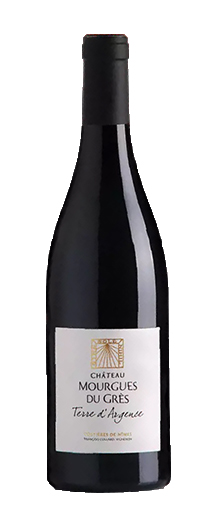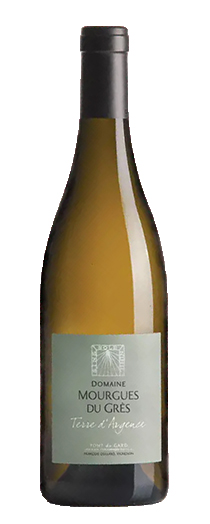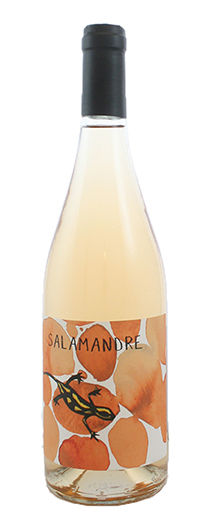Making the delta an alpha
The region which we now refer to as the Costières de Nîmes boasts a viticultural history going back several centuries BCE when the Greeks were reputed to have planted vines in the area. The vine growing culture was further encouraged by Roman expansion, the area was settled by veterans of Julius Caesar’s campaigns in Egypt, and bottles of Costières de Nîmes bear the symbol of the Roman settlement at Nîmes, a crocodile chained to a palm tree. In the early Middle Ages, the church helped to expand the reputation of the region as a vine growing hub. Indeed, the Abbey of Saint-Gilles, 20km south of Nîmes, once delivered its wines to the Popes when they were installed in Avignon.
Formerly known as Costières du Gard, a VDQS, the wine achieved AOC status in 1986 and was renamed Costières de Nîmes in 1989. In 1998 the growers’ organization (the syndicate) requested that the appellation should be attached to the Rhône wine region as their wines were considered to be more reflective of the typical characteristics of Rhône wines than of the Languedoc region to which the area geographically belongs. The move of Costières de Nîmes to the regional committee of the Rhône valley was effected in July 2004.
The Costières de Nîmes AOC/AOP covers an area around (and mainly south and east of) the town of Nîmes. Its south-eastern boundary follows that of the Gard departement, in which Nîmes is located, halfway to the town of Arles, in the Bouches-du-Rhône departement.
This is in the western part of what is known as the Rhône Delta – the meeting point of the Rhône, Gard and Durance rivers before they head towards their final destination: the Mediterranean Sea. The soils themselves were formed by successive prehistoric river washes and are generally composed of patches of large rocks and pebbles (galets – the same stones as one finds in the vineyards of Châteauneuf-du-Pape) interspersed with red, sandy clays. Thus, while displaying different degrees of clay and stone in certain areas, the soils of Costières de Nîmes do not vary as much as those in other Rhône appellations. Indeed, the gentle slope and generally deep, stony/red clay soils are given the geographic term “costières”.
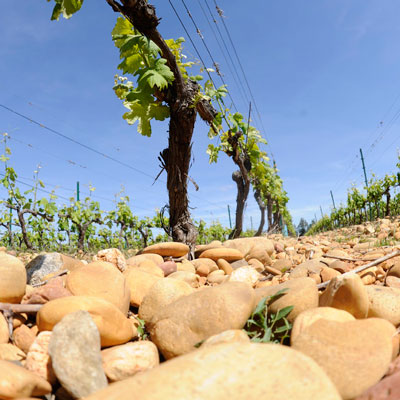
The climate is also very particular. Although very sunny (2,700 hours of sun annually) and dry, especially in summer when drought conditions are common, the famous, cool, northern “Mistral” wind blows from the upper Rhône valley and exerts a major influence. The Mistral’s disease-mitigating effects in the vineyard are further supplemented by coastal winds blowing from the sea, across the Camargue scrubland, and brought inland by convection (the rising hot air from the costières’ stony soil effectively creating its own air currents). In summer, sea breezes blowing across the hot mass formed by the galets increases the differences between daytime and night temperatures, preserving freshness and purity in the grapes. The salt marsh and lagoons of the Camargue have an otherworldly quality to them – here you will find small bulls and the famous white Camargue horses as well as flamingos and other exotic forms of wildlife.
Areas of “garrigue” (the quintessential southern French landscape of dry, low-lying scrubland on limestone soils readily associated with the Camargue) are present in the eastern corners of the appellation, providing excellent potential for viticulture. When not planted with vines, this land is generally populated with rosemary, lavender and thyme, as its relatively loose, free-draining soils are poor in nutrients.
Costières de Nîmes wines require Grenache, Syrah and Mourvèdre to make up at least 60% of the red and rosé wines with Grenache and Syrah required to make up at least 20% of any vineyard. The appellation also allows Cinsault, Carignan and Marselan as supplementary varieties. As for the white wines, Grenache Blanc, Roussanne and Marsanne form the principle triumvirate (although white wines make up only a small proportion of the region’s output) and must form at least half of any white blend. These can be supplemented with Bourboulenc; Clairette; Macabeo; Vermentino/Rolle and Viognier.
The appellation has made pioneering progress in terms of environmental and landscape protection; 25% of its vines are now grown organically as a result of green initiatives launched over 10 years ago – the Costières de Nîmes Environmental and Landscape Charter being just one of them.
Mourgues du Grès is run by Anne and François Collard. François’s father was the first owner and he made wine, but mostly sold grapes in bulk. François started his career in Bordeaux, working in the cellar at Château Lafite-Rothschild. In 1990, soon after the Costières de Nîmes received appellation status, François was inspired by the potential to make great wines from this little known appellation and he moved back to run the family winery. The first vintage bottled under the Château Mourgues du Grès name was in 1993.
Nîmes historically made great wines that were famously served centuries ago to the pope of Avignon. The wines were made by the Ursulines nuns of Beaucaire. The nuns were identified by their location; the nuns of the river, nuns from the sea, or nuns from the stones. Mourgues means ‘nuns’ in Provençal, an ancient French dialect. Mourgues du Grès means ‘nuns of the stones’. The nuns managed fruit orchards and vineyards and the Collard family still manages both today.
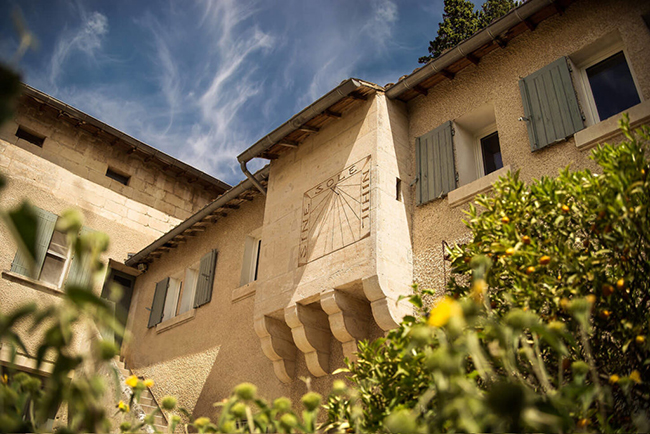
Château Mourgues du Grès is on the plateau of Beaucaire, benefiting from both northern and southern sun exposure. They have the classic mix of soils, galets stones, sand, and they even have an area with limestone, which is unusual in the appellation and ideal for the production of elegant white wines. The Collard’s have always been innovators, working to unlock the very best of the terroir. François’s father was the first to plant Syrah in the region and today it is the most widely planted variety in the Costières de Nîmes. Syrah grows especially well here because of the cool nights. François himself planted Marselan in 2007 and reported the results back to the appellation administrators and it’s now allowed to be up to 10% of the blend in the red wines. It adds complexity and freshness and has a lower alcohol.
François and Anne are both very passionate about nature. They have practiced organic agriculture since 2004 (certified in 2011); meticulous care and attention are paid to the work in the vineyards.
François and Anne Collard never rush to make changes, but at the same time, are constantly searching for the best way to manage their vineyards to get a very pure expression of the Costières de Nîmes. In 2018, they began the process for biodynamic certification and from the 2020 vintage, the wines are certified. They harvest at night to reduce the energy output required to cool down the grapes.
Like the work in the vineyards, in the cellar, all decisions are carefully taken with the aim of getting the best expression. For the Collards, this means making wines in a natural way while maintaining a classic style. Whites and rosés are fermented and aged in stainless steel tanks; the reds are fermented in cement so that there is an oxygen exchange, and then are aged in cement or barrels depending on the cuvée. Since 2015, no sulphur is used during vinification or ageing on any of the wines, only a small amount at bottling.
Each bottle shows the emblem of the sundial that is on the wall of the winery, with the words “Sine Sole Nihil,” which translates to “There is nothing without sunshine.” For Mourgues du Grès, this symbolizes the maturity and harmony expressed in their wines. The Collards are dedicated in every step of the process to make the best wines and their work shines a light on what is possible from this appellation.
What distinguishes their wines is what distinguishes those of Costières de Nîmes from other Rhône appellations. Syrah is the backbone of the reds. The wines have a ripe yet not jammy expression of Syrah, somewhere between red and dark fruits, juicier with hint of confit cherry. Grenache fills out the middle palate with its soft strawberry fruit and Mourvèdre, when used in blends, provides chalky tannins and definition.
In terms of quality, the Terres d’Argence Rouge has it in spades with all of the vineyards that go into this blend at least forty-five years of age. The blend is 70% Syrah and the rest equal parts Grenache and Mourvèdre. The vineyards are planted on marl and limestone soils, with a surface strata of galets roulés just like in Châteauneuf du Pape. The wine is fermented with native yeasts and raised in a combination of cement, foudres and a tiny proportion of small barrels. Bouquet of cassis, wood-smoke, leather, stone, lovely spice tones and just a whisper of oak. On the palate the wine is deep, focused and full-bodied, with a superb core of fruit, excellent mineral undertow, ripe tannins and fine balance on the long and complex finish. The old vines here really give the wine fine mid-palate stuffing.
The whites, which are multi-blends, are not to be neglected, as they always seem to express the interplay between garrigue and limestone. Their ripe citrus acidity and saline edge is reminiscent of high-end Provençal.
We also work with Château Saint-Cyrgues, a 50-hectare domaine which holds organic certification.
Currently run by Jean-Pierre & Loic Ferraud, the winery was established on the site of the ruins of Saint Cirice des Marges church, which was made up of the Priory of Saint Cyrgues (independent from the Psalmody Abbey where monks cultivated their vines).
Today, nothing remains of the old priory, it was, most likely, seized during the Revolution and since then has changed hands several times. The estate of Château Saint Cyrgues has a particularly rich past life; many people have travelled and given life to this soil and it is found on the route of the famous pilgrimage to Santiago de Compostela.
In the vineyard, remedies are encouraged, and work is done by hand.
The murrey-hued violet-scented Saint-Cirice Rouge is for those who enjoy gutsy spicy wines – fabulous concentration for a wine at this level. This blend of Grenache and Syrah pleads for barbecued lamb. The Costières de Nîmes Blanc is a mini-Châteauneuf, being a blend of Roussanne and Grenache Blanc. Flavours here of ripe apricots, pulped pears, green herbs and lime leaves and the characteristic southern Rhône “oily” mouth-feel. Try this with fruits de mer, grilled lemon sole and even young Roquefort.
Château Saint-Cyrgues also make us two natural house wines, under the Salamandre label. The red is 100% Syrah, and the orange a light-touch skin-macerated Grenache Blanc.


